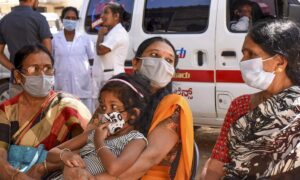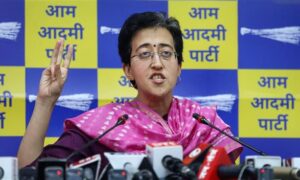New Delhi [India] : In a symposium on the Indian Economy in Tokyo, Governor Shaktikanta Das emphasized India’s resilience amid global challenges. Despite macroeconomic and geopolitical shocks worldwide, India maintained stability through proactive, pragmatic and prudent policy responses.
Das said, “The global economy continues to face multiple macroeconomic and geopolitical shocks. The prediction of a global recession has not come true but there are indications that global growth is slowing down amid tightening financial conditions and still elevated inflation. Even as the fallouts of the pandemic, the war in Ukraine and the unprecedented tightening of monetary policy reverberate across the world, the recent developments in West Asia have added to the litany of challenges for the global economy”.
During the COVID-19 pandemic, India injected targeted liquidity, avoiding a liquidity trap. Regulatory actions included measured support, moratoriums on loan repayments, and loan resolution frameworks. Reforms in banking and financial systems strengthened India’s economic foundation.
Das said, “To protect the economy from the relentless shocks in the recent period, our endeavour has been to remain proactive, pragmatic and prudent in our policy response. We were conscious of the fact that an overdose of monetary medicine while relieving the pain in the short run, could give rise to increased vulnerability and fragility over a period of time”.
Das added, “Following the onset of the COVID-19 pandemic, we injected liquidity, but almost every measure of liquidity injection was for a limited period and was targeted. By doing so, we avoided the pitfall of a liquidity trap. Further, our lending standards were not diluted in terms of our counterparties (banks) and collateral requirements for on-lending to stressed entities or sectors”.
The RBI Governor said India had emerged as a stable and opportunistic economic powerhouse, with robust growth, moderated inflation, and strengthened macroeconomic fundamentals.
“We have come out with certain governance guidelines for banks and introduced a scale-based regulation for non-bank financial companies (NBFCs), based on the size and complexity of their businesses. The process of supervision of banks, NBFCs and other financial entities has also been substantially strengthened with the focus being on early detection and pre-emptive correction, rather than reacting to the symptoms of weaknesses”, said Das.
The RBI Governor also highlighted the country’s young demography, improved infrastructure, and enabling policy environment position it as a global growth engine.
Das stated, “Today, India has become the new engine of global growth with its young demography, improving physical and digital infrastructure and 1 India is endowed with a great demographic dividend as 68 per cent of the total population estimated at 1.429 billion in the latest World Population Report 2023 (United Nations Population Fund) belongs to 15-64 years. 4 above all, an enabling policy environment”.
“We look up to the Japanese “Economic Miracle” as a learning opportunity as we prepare the ground to uplift India’s growth trajectory. Japan has played a critical role in infrastructure building in India through several public and private sector partnerships”, said the RBI Governor.
Shaktikanta Das said that ties between India and Japan form a strong foundation.
Collaborations in infrastructure projects and opportunities in frontier technologies like AI, quantum computing, and resilient supply chains are promising.
“Policy focus on strengthening macroeconomic fundamentals and continued structural reforms have made India distinct in terms of growth outcomes. This was reflected in the rebound in GDP growth after the pandemic from a contraction of 5.8 per cent in 2020-21 (pandemic year) to a growth of 9.1 per cent in 2021-22 and 7.2 per cent in 2022-23” Das said.
He added, “The GDP grew by 7.8 per cent in the first quarter of 2023-24, and the available high-frequency indicators suggest the continuation of this momentum. For the full year 2023-24, real GDP growth is projected at 6.5 per cent by the Reserve Bank”.
India’s well-diversified economic structure and focus on domestic demand contribute to its resilience. The post-pandemic recovery saw private consumption as a significant GDP contributor.
Prudent monetary and fiscal policies, along with supply-side measures, played key roles in managing inflation.
RBI Governor said, “India is currently the world’s third largest FinTech ecosystem in terms of the number of FinTechs operating in India. It is growing at a robust pace and is projected to generate around US$200 billion in revenue by the year 20306, contributing to approximately 13 per cent of the global FinTech industry’s total revenue in 2030”.
India’s FinTech ecosystem, driven by government initiatives and private sector innovation, has positioned the country as a global player.
The JAM Trinity and UPI have revolutionized financial inclusion and digital transactions. The introduction of the e-rupee and a customer-centric approach showcase India’s commitment to financial innovation.
Das said, “As things stand today, the MPC in its October 2023 meeting has projected CPI inflation at 5.4 per cent for 2023-24, a moderation from 6.7 per cent in 2022-23. Headline inflation, however, remains vulnerable to recurring and overlapping food price shocks”.
“The core inflation has also moderated by 170 basis points since its recent peak in January 2023. In these circumstances, monetary policy remains watchful and actively disinflationary to progressively align inflation to the target, while supporting growth”, he added.
Governor Das emphasized India’s sustained growth trajectory, underlining the importance of avoiding complacency in the face of uncertainty.
The partnership with Japan holds immense potential, and India looks forward to a new era of growth and prosperity for both nations.























